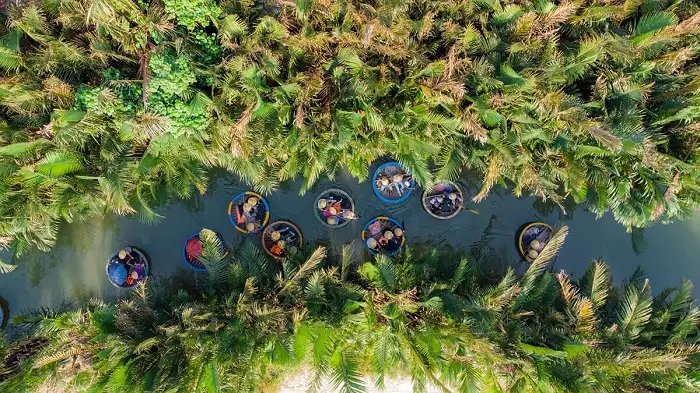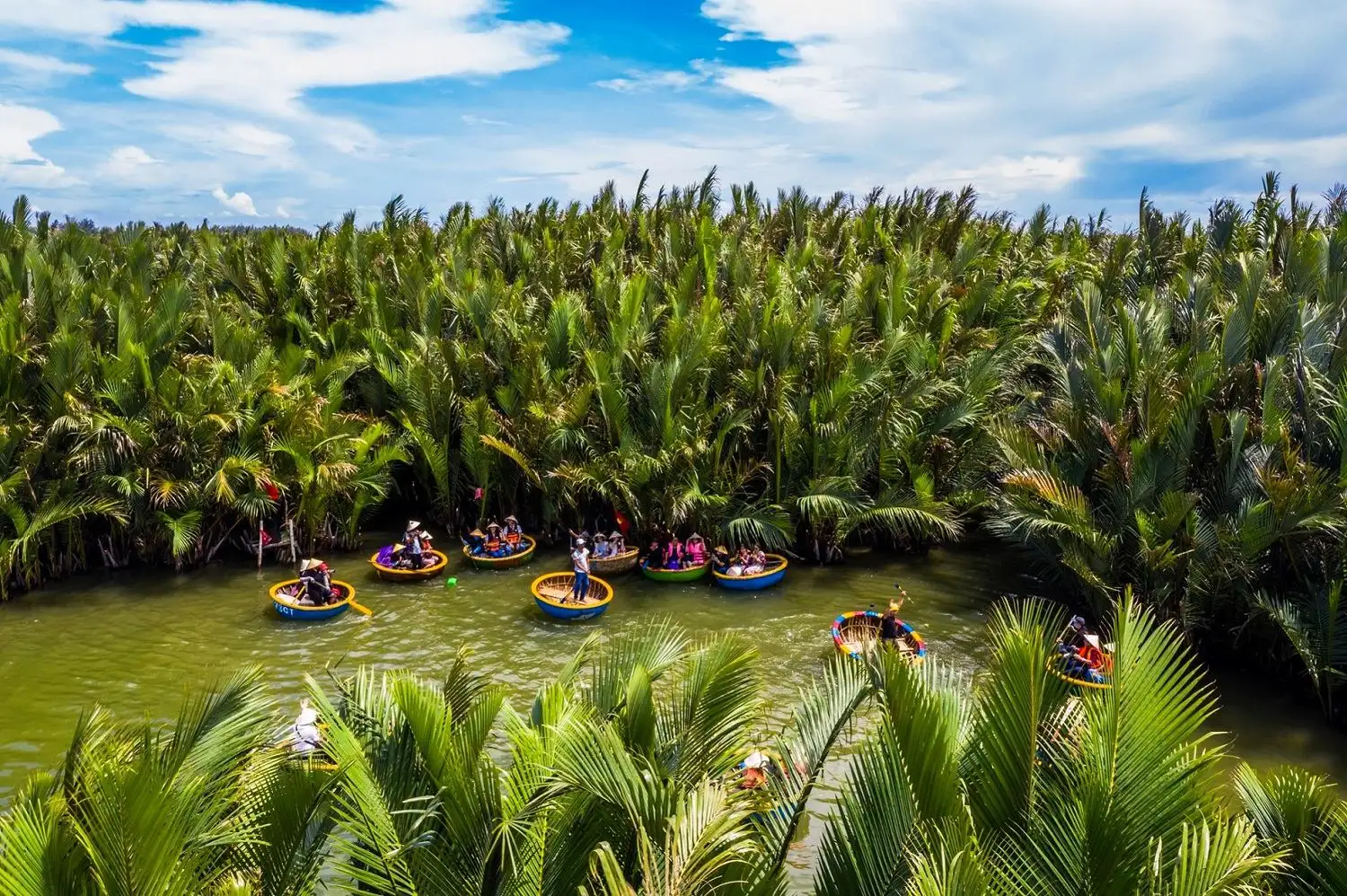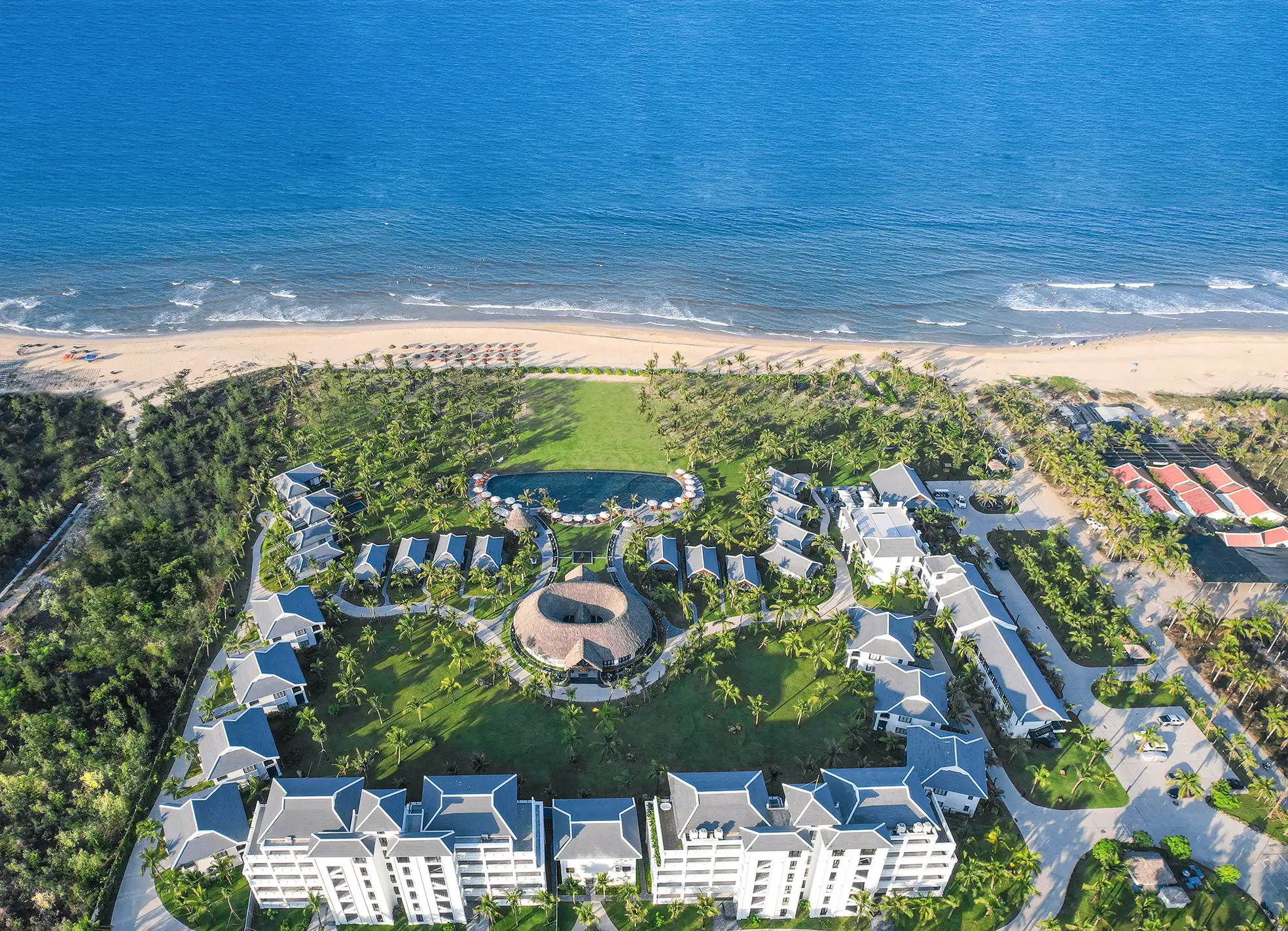Bay Mau Coconut Forest: A unique Eco-Tourism destination in Vietnam
Nestled in the charming countryside of Hoi An, the Bay Mau Coconut Forest (Rừng dừa Bảy Mẫu) offers visitors a serene and fascinating glimpse into Vietnam’s natural beauty and traditional way of life. Often referred to as the “Southern Mekong Delta in Central Vietnam,” this lush mangrove ecosystem is a haven of tranquility and adventure. Whether you’re a nature lover, culture enthusiast, or thrill-seeker, the Bay Mau Coconut Forest promises a memorable experience that captures the essence of Vietnamese heritage.

The history and significance of Bay Mau Coconut Forest Hoi An
The Bay Mau Coconut Forest has a rich history deeply intertwined with the lives of the local people. During the Vietnam War, this forest served as a revolutionary base for the Viet Cong, providing natural cover and a strategic hideout. The nipa palms that dominate this region not only shielded soldiers from view but also supplied raw materials for constructing shelters and crafting tools. Today, it stands as a symbol of resilience and a testament to the harmony between humans and nature.
Covering approximately 100 hectares, the forest derives its name from the abundance of nipa palm trees (“dừa” in Vietnamese) that thrive in the brackish waters of the region. These palms play an essential role in the ecosystem, protecting the area from erosion while offering a livelihood for the locals through traditional crafts and products. Beyond its ecological importance, the forest is a living museum, showcasing the interplay of history, culture, and natural beauty that defines Hoi An.
Exploring Bay Mau Coconut Forest: Activities and attractions
The Bay Mau Coconut Forest offers a variety of activities that cater to all interests, from leisurely sightseeing to hands-on experiences. Here are some highlights:
1. Basket boat rides

One of the most iconic experiences at Bay Mau is a ride in a “thùng chai,” or basket boat. These round, bamboo-crafted boats are an engineering marvel, designed to navigate the narrow waterways of the forest with ease. Guided by skilled locals, you’ll glide through the tranquil canals surrounded by towering nipa palms, their green fronds swaying gently in the breeze.
The journey is not just about the ride—it’s an interactive experience. Guides often perform impressive boat-spinning tricks, showcasing their expertise and adding an element of thrill to the journey. They also create intricate animal-shaped souvenirs from coconut leaves, providing a tangible memory of your visit. The soothing sounds of water lapping against the boat, combined with the rustling of leaves, make this activity a true escape from the hustle and bustle of everyday life.
2. Fishing and crab catching
For a more immersive experience, join the locals in traditional fishing or crab-catching activities. Armed with simple tools like bamboo rods, nets, and small traps, you’ll learn the art of sustainable fishing as practiced for generations. Crab catching, in particular, is a favorite activity among visitors. With a mix of patience and technique, you can try your hand at pulling in crabs from their hiding spots among the mangrove roots.
This activity not only offers a sense of accomplishment but also deepens your appreciation for the locals’ resourcefulness and connection to their environment. It’s an experience that brings you closer to the heart of rural Vietnam.
3. Eco-Tourism and nature walks

The forest is an ecological wonder, home to a diverse range of flora and fauna. Take a guided nature walk to discover the intricate ecosystem of the mangroves. Learn about the vital role nipa palms play in preventing coastal erosion and their contribution to the livelihoods of local communities. Your guide will also point out native bird species, aquatic life, and unique plant varieties that make this ecosystem so special.
These walks are more than a stroll; they’re an educational journey that highlights the delicate balance between human activity and nature. For photographers, the dappled light filtering through the palm fronds and the reflective waterways provide stunning opportunities to capture the essence of Bay Mau.
4. Cultural performances
Many tours include live cultural performances featuring traditional Vietnamese music and dance. These performances, often held in the heart of the forest, provide insight into the rich cultural tapestry of the region. Dressed in vibrant costumes, performers bring to life folk tales and historical events through song and movement, creating a mesmerizing spectacle.
The performances are often accompanied by explanations, allowing visitors to understand the stories and traditions being depicted. This cultural immersion adds depth to your visit, connecting you to the soul of Vietnam.
5. Cooking classes and local cuisine
Savor the flavors of Hoi An by participating in a cooking class or enjoying a meal prepared with freshly caught seafood and locally sourced ingredients. Cooking classes often take place in outdoor kitchens, surrounded by the serene beauty of the forest. Under the guidance of a local chef, you’ll learn to prepare traditional dishes such as tamarind crab, grilled fish, and rice cakes wrapped in coconut leaves.
For those who prefer to sit back and relax, many tours offer delicious meals featuring specialties like “bánh xèo” (crispy pancakes) and sweet coconut desserts. Dining amidst the natural beauty of Bay Mau Coconut Forest adds an unforgettable element to your culinary experience.
Environmental importance of Bay Mau Coconut Forest

The Bay Mau Coconut Forest is more than a tourist attraction—it’s an ecological treasure that plays a crucial role in preserving the region’s natural balance. The nipa palms act as a natural barrier against coastal erosion, shielding the land from rising tides and storms. The forest also serves as a vital habitat for a variety of species, from fish and crabs to birds and insects, ensuring biodiversity thrives in the area.
Moreover, the forest’s ability to sequester carbon highlights its importance in combating climate change. Local communities are actively involved in sustainable practices to protect this precious ecosystem, balancing tourism with conservation efforts. Visitors have the unique opportunity to witness these initiatives and contribute by supporting eco-friendly tours and activities.
Visiting Bay Mau Coconut Forest is not only a chance to experience its natural beauty, but also an opportunity to support the local community. Many families in the area depend on eco-tourism for their livelihood, offering services such as basket boat rides, handmade crafts, and home-cooked meals. By choosing locally operated tours and purchasing traditional products, you directly contribute to the preservation of this unique destination and its cultural heritage.
Local crafts and souvenirs: A taste of tradition
The nipa palms of Bay Mau Coconut Forest are not just a natural marvel—they’re also the source of numerous traditional crafts. Locals skillfully weave the leaves into hats, mats, baskets, and even decorative items. Purchasing these handmade products not only supports the community but also allows you to take a piece of Vietnam’s cultural heritage home with you.
Many tours include demonstrations of these crafts, providing insight into the artistry and dedication involved. Watching a skilled artisan transform simple palm leaves into intricate designs is a testament to the creativity and resourcefulness of the local people.
When to visit and how to get there
Best time to visit
The ideal time to visit Bay Mau Coconut Forest is between February and August when the weather is dry and sunny. During this period, the waterways are calm, and the forest is at its most vibrant, offering perfect conditions for outdoor activities. The lush greenery and clear skies create an idyllic backdrop for exploration and photography.
Getting there
The Bay Mau Coconut Forest is located approximately 3 kilometers from Hoi An’s Ancient Town. Visitors can easily reach the forest by:
- Bicycle or motorbike: A scenic ride through the countryside, passing lush rice paddies, quaint villages, and glimpses of daily life in rural Vietnam.
- Taxi or private car: Convenient for groups or those seeking a more comfortable and direct option.
- Boat: Embark on a picturesque boat ride along the Thu Bon River, combining transportation with sightseeing. This option offers stunning views of the riverbanks and a peaceful approach to the forest.
Bliss Hoi An Beach Resort & Wellness: Your gateway to tranquility

After exploring the lush landscapes of Bay Mau Coconut Forest, unwind at Bliss Hoi An Beach Resort & Wellness, an oasis of luxury and relaxation. Located just a short drive from Hoi An’s ancient town, this resort offers breathtaking ocean views, world-class amenities, and a serene environment.
Bliss Hoi An is designed to provide guests with a rejuvenating escape. Enjoy elegantly furnished rooms, a pristine private beach, and a variety of wellness programs, including spa treatments, yoga sessions, and meditation retreats. The resort’s restaurants serve a delightful mix of Vietnamese and international cuisine, crafted with fresh, local ingredients.
Whether you’re seeking a romantic getaway, a family vacation, or a wellness retreat, Bliss Hoi An Beach Resort & Wellness ensures an unforgettable stay, blending comfort and natural beauty effortlessly.









